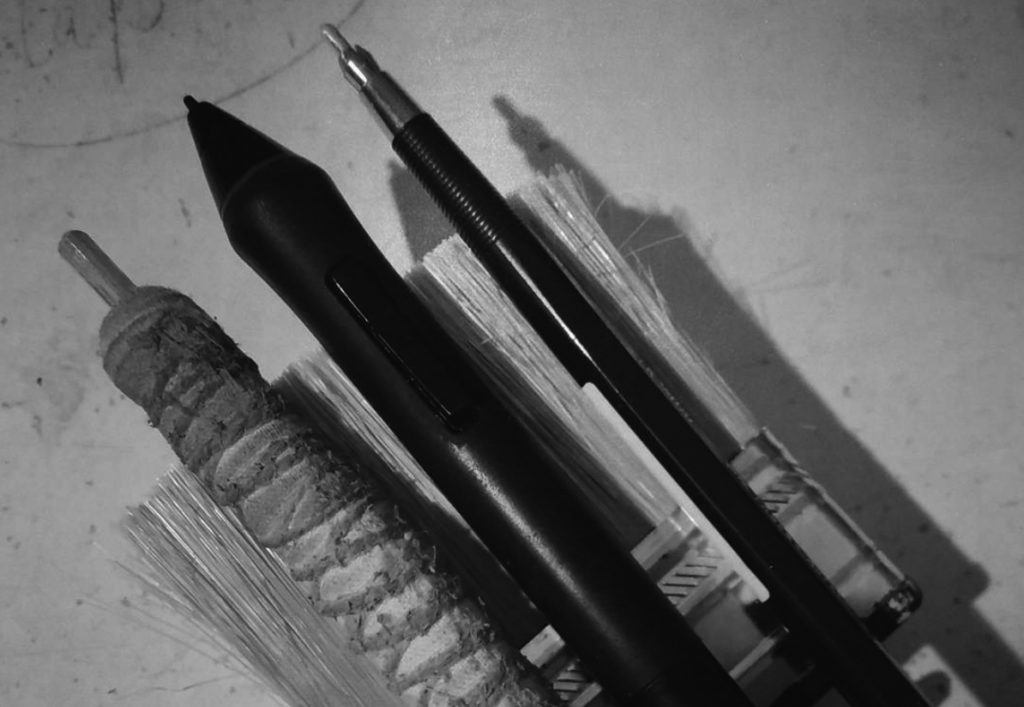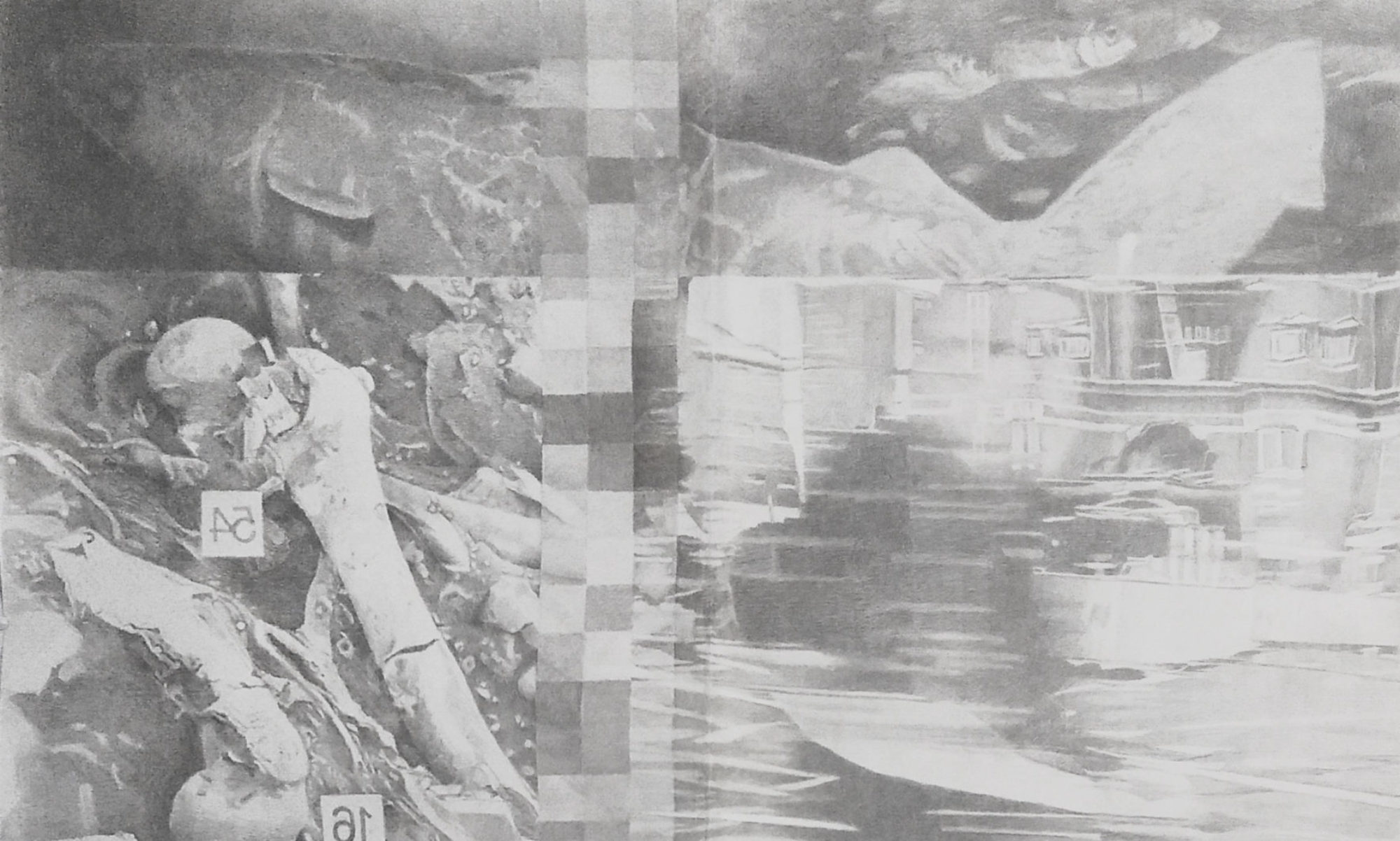fragmented
asked about my work, i usually answer ‘silverpoint’ if i have to keep it short. there is a lot to say about that subject and it is one of the most striking traits. but if i had to sum up my work in one word, it would not be the medium – which is important but not irreplaceable. the word that steps forward with some reluctance is ‘ fragmented’. that’s it. i wish i had something better to offer but that is the result of the confluence of my traits, my personal situation and the times we now live in as a species.
mahler 3. sinfonie (2025)
music is repetition. history is repetition.
to find an entrance into mahlers third symphony, I went back to what I know: german literature. for the scherzo, mahler took inspiration from des knaben wunderhorn, specifically achim von arnims poem ablösung, and for the misterioso from friedrich nietzsches also sprach zarathustra.
mahler chose the theme of season change as topic for his scherzo and his application was indeed grotesque. nature is a beloved backdrop for romantic art, and our place as humans in it. then – much like today – worries about overconsumption and its cost to nature left its mark in art. in the poem and especially in mahlers musical adaptation of it, nature simply continues after the death of the cuccoo, the nightingale does not bring much change – it’s all just a neverending Unterhaltungsdelirium. the sun also rises.
homo sapiens has been walking this planet for 200 millennia, history describes only a few. in the misterioso, mahler’s extending this theme of eternal repetition to the human experience of subjective and ephemeral corporeality, quoting nietzsche, ‘oh mensch! gib acht!’ and his universal theory of the eternal return, the infinite loop. mahler identifies a huge, contemporary cultural transformation (much like in our current time), quoting the freshly published zarathustra who wants to dethrone all the old norms and values.
to study the deluge close-up (2024)
we may be offered lots of information from past and present but are increasingly unsure which version to trust. it comes to us as compilations of distorted images. the artist is a conduit, capable of filtering but also of holding up its old, broken mirror to our time: no objective present, no present without a past, no objective past.
and the exponentially growing info-tangle is just one part of the judgement-free deluge we wade through. the bath overflows and instead of getting up and turning off the tap, we remain comfortably submerged ordering extra mops on the internet. we lip-read in the fogged-up mirror what our underbelly commands.
that great, wondrous, boundless churning river connects us all as human beings because for every human being, life is a surprise to be survived. a stranger is brother to a stranger, Mahmoud Darwish wrote. let’s come together, sang John Lennon.
the wry beauty of the swirling river must be named, if only to prevent a visual overdose of the same suffering from overwhelming our ability to process it.
(the series title and the titles of some of the works in this series are borrowed snippets from poems by Mahmoud Darwish, the great Palestinian poet of the 20th century).
damascus (2023)
fellow artist Niels Broszat invited me on a virtual tour through Damascus while my world was very much an island in lock-down. i had not chosen Damascus (Niels did, do have a look at his art) but welcomed the diversion. Rania Kataf, Syrian cultural heritage expert, founder of Humans of Damascus, and a true Damascene, showed us a very old, culturally rich city (follow Rania on Instagram).
i vaguely knew about its age but i was apprehensive at first to use this new experience because of its recent history. war torn between an autocrat regime and ISIS extremists and more factions and eventually global powers. even in my remote West, local populist politician Wilders dared to call the culture of Islamic countries ‘backwards’ – only to exhibit his own ignorance. an ignorance that needs to be challenged by knowledge.
it felt like a hornet’s nest i should keep my nose out of. but then again, this civil war is but a blip in its several millennia-long existence. and the people of this country deserve some positive attention after a lot of suffering. and really, so much of my own culture can be traced back to the Levant.
the multitude of belligerent parties in this horrible war is characteristic of this melting pot: regularly piping hot and partly exploding but in the end, like she did so often in her history, the city adapted and survived.
Canaanites, Phoenicians, Arameans, Sumerians, Assyrians, Babylonians, Hittites, Ancient Greeks, Romans, Byzantines, Ottomans, Arabs, Ancient and modern Egyptians, European Crusaders, Persians, European colonists, Lawrence of Arabia, Christian Mongols, Kurds, Alawites, Christians, Muslims, Druze, Jews, Americans, Turks, Russians.
to highlight just one of legions of rulers: Saladin! he was a Kurd who became sultan of Egypt and Syria, a mighty adversary of the Crusaders but at the same time honoured in medieval Europe as a model of a wise and fair king. (do read the Ringparabel in Lessings Nathan der Weise).
the more i read about this city, the more i felt like Goethe reading the Persian poet Hafis: Wer sich selbst und andre kennt / Wird auch hier erkennen: / Orient und Occident / Sind nicht mehr zu trennen. bearing in mind that my east actually is in the western part of the silk route. i felt like i was reading the history of mankind, not just that of one city.
today, we seem to be more connected worldwide than ever before. on the other hand, we’re still focused on what divides us. and what divides us, has always divided us: the multiplicity that actually defines our species as one.
so this series is not really about Damascus. as a Western artist, my knowledge and perception of this city, its past and culture(s) is a distorted, fragmented and coloured tapestry at best. i hope, some patterns are identifiable nevertheless, of ancient and modern Damascus, of ancient and modern human /being/: an indispensable characteristic chunk of the human mosaic.
the juxtapositions (2022)
rearrange the letters from ‘cell’ to ‘chill’ and a new characteristic of the letter ‘c’ appears. these drawings are such rearrangements: each time they unlock a different characteristic of the parts. the whole of knowledge is greater than the sum of the parts.
choice of context and choice of material, coloured pencil or silverpoint steer the interpretation. knowing this is just as important as the conveyed information itself.
at the basis of each drawing is astonishment at current themes such as displacement, inequality, the human as animal in a geographical and/or historical context. each current theme consists of new images of historical or timeless counterparts. in this way it gains weight or is put into perspective.
vsvs commvnis aqvarvm est,
ben

